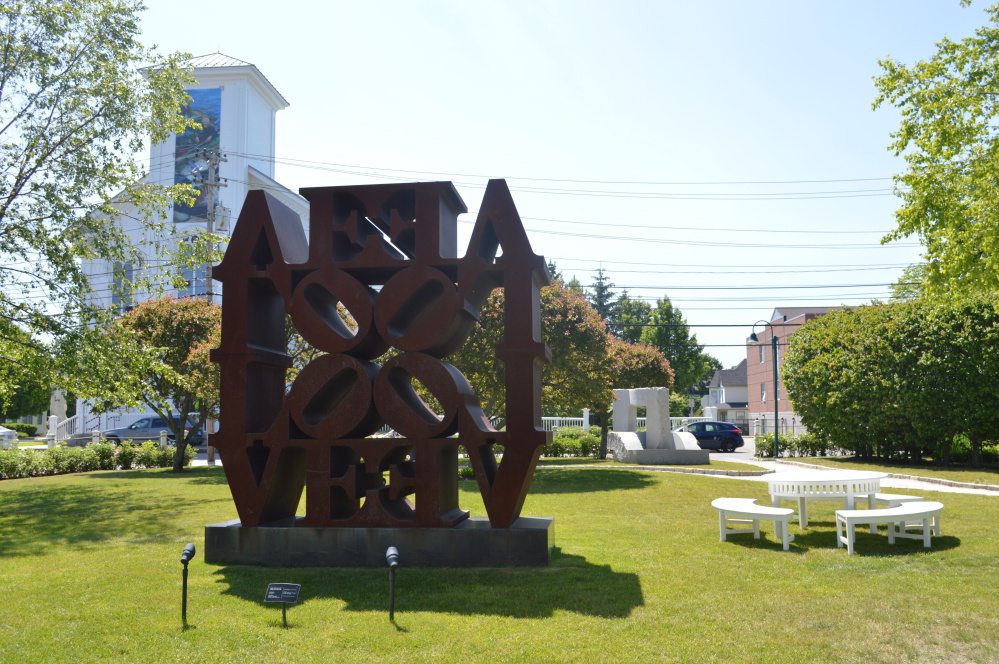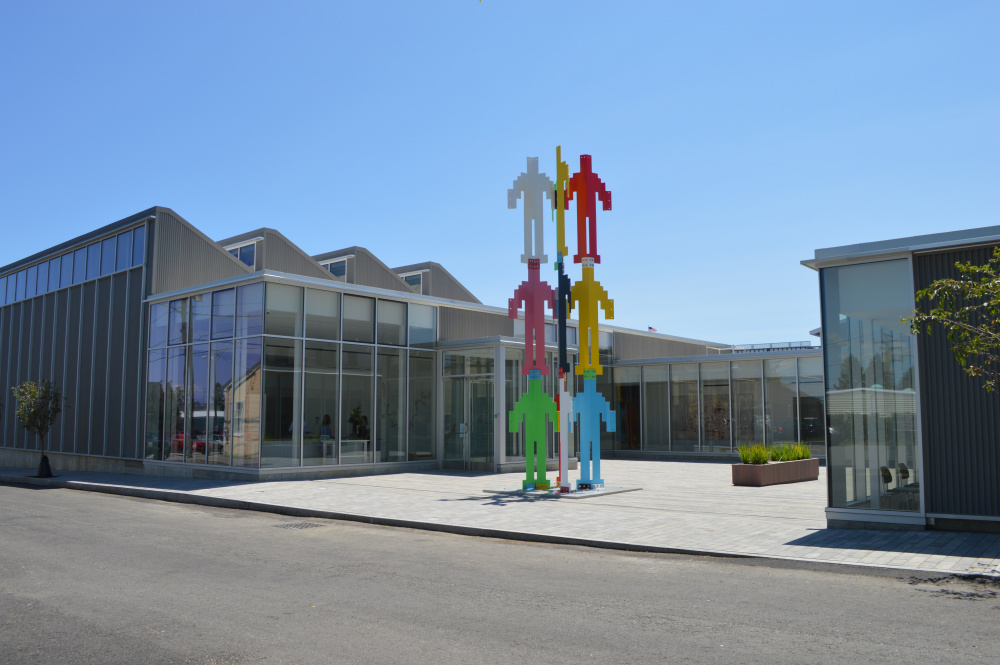As one of the nation’s best art brands, Maine has been a painting player from the very awakening of the American art identity. But there was always more, much more.
Winslow Homer was internationally celebrated for his oils, but he was best known in America for his prints, and he is still considered one of America’s historically strongest watercolorists. The country saw Maine in the paintings, drawings, watercolors and prints of Marsden Hartley, Edward Hopper, John Marin, George Bellows and many of America’s greatest modernist painters. Later, photographers like Berenice Abbott and Eliot Porter expanded the Dirigo brand.
Maine artists have been international leaders in everything from architecture to contemporary installation – everything, generally, except sculpture. For years, if you wanted to see good sculpture in Maine, there was only one place to look: the internet.
I don’t mean to dump on Maine’s sculptors. But good sculpture is rare in Maine, and with visual culture, what isn’t seen loses its place in our sensibilities. Unfortunately, it’s not just Maine: 3D design is waning in America. If we don’t see it, we don’t understand it, value it, support it or create it. Young postmodernists often doubt this logic, believing they have unfettered access to everything. But you can’t access what you don’t suspect. Maine’s Civil War hero, Joshua Chamberlain, for example, taught the now-forgotten art of philology at Bowdoin College. Sometimes, in recent years, it has felt like sculptural composition in the round was going the way of philology.
Not today. Despite all of the grumblings about the dismal state of the Portland art scene (Susan Maasch Fine Arts, the last bastion of top-tier cutting-edge contemporary art in a commercial gallery setting, last month announced its closing), more and more good sculpture has been placed in Portland’s public spaces.
Charlie Hewitt’s 25-foot “Rattles” on Congress Street in Portland, and their Lisbon Street counterparts in Lewiston, are examples of that truly rare thing: successful contemporary large-scale sculpture in Maine. A recent pleasant surprise is the success of Judith Hoffman’s “The American Dream” installed in Portland’s Lincoln Park through May 2017. It’s an exciting, jangly and teetering 12-foot pile of four single-family homes rendered in rusted steel, with the top house upside down as though being pulled away, Wizard-of-Oz-like, by some unseen tornado. Hoffman’s statement mounted on a nearby label suggests the work is about “the single-family home” and the “harsh reality that for many this remains a dream deferred.”
Hewitt’s oversized swizzlesticks work as place-markers, but they represent a type of pop mentality that too simplistically piggybacks on Claes Oldenburg’s great, oversized objects that inevitably used their scale for surprising bits of wit. An 18-foot shuttlecock on a huge museum lawn, for example, is expansively clear, but the National Gallery’s giant typewriter eraser is subtle in its movement toward our own bodies. Typewriters, after all, get their scale from our hands. I like Hewitt’s details and materials, as well as the work’s lively presence, but I wish the balance would tilt from its focus on branding more toward concept and wit.
Jonathan Borofsky’s “Digital Man,” unveiled last week at the new Center for Maine Contemporary Art in Rockland, comprises three stacked layers of brightly powdercoated 8-foot steel figures, 12 in all, that reach 24 feet into the air. While the Hoffman is an excellent bit of sculpture in the round, it doesn’t feel deduced from the artist’s stated inspiration. However, “Digital Man,” from his “Human Structures” series, clearly reflects Borofsky’s thinking that people and their individual perspectives are bits of a larger whole that is profoundly more than the sum of its parts.
It would be easy to initially define Borofsky’s brightly colored and modular work as pop art. But the correction comes naturally to any viewer: Instead of pop’s too-cool-for-school lack of individual perspective, Borofsky’s high-gear Baroque energy celebrates individual emotional content and perspective. While Warhol let us watch Marilyn Monroe get crushed under the weight of her endlessly proliferated images, Borofsky hints we’re part of something amazing that wouldn’t exist without us. And with sculptures similar to his “Digital Man” installed throughout the world, from Germany to China, it is this person-particle-as-part-of-a-whole aspect of Borofsky’s art that the world has acknowledged and welcomed.
Borofsky has deep roots in Maine and has lived in Ogunquit full-time since about 1990. Hoffman, a rising star, works out of New York.
Both Hoffman’s and Borofsky’s work successfully convey social, cultural and ethical content. “American Dream” succeeds by hinting at narrative implications: houses through time, a teetering pile, that Oz thing and so on. Something’s about to happen, and we want to watch to find out what.
Borofsky’s “Digital Man” might seem more static, but it quietly relies on construction – how it came together – which is the opposite, but not unrelated to Hoffman’s tower-crashing-down logic. Four giant bolts connect each pair of Borofsky’s figures – unapologetically large, powerful and pristine stainless steel hardware. In relation to the simplified colorful forms of the monochrome figures, the systematic focus on their connections offers a jolt of seriousness and a sense of purposeful construction. This is a cultural tower, a place of perspective that cannot be easily undone.
A block away, similarly celebratory in its playful poking above the Rockland roofline, is Robert Indiana’s 1964 “EAT” – five pop black circles (lit by 400 internal lights) with the letters E, A and T on them (the center circle’s “A” is shared). It’s a work that hasn’t been shown since it was commissioned by Philip Johnson for the New York State pavilion at the 1964 World’s Fair in Queens, where visitors famously queued up, wrongly thinking thinking it was a sign for actual dining. (To be clear, the diner sign-like sculpture is mounted on the Farnsworth Art Museum, not one of the many Main Street eateries.) Indiana’s four-way “LOVE” sculpture can be seen in the museum’s excellent nearby sculpture garden and has long been among my favorite bits of outdoor sculpture in Maine. (My favorite is Lynn Chadwick’s “Stranger III,” hiding behind Colby College’s music building.)
Indiana and Borofsky have much in common in terms of their quirky and personal relationships to pop art. They are two of America’s best-known artists while also being two of Maine’s best-kept secrets. And because of them, right now Rockland is a great place to see sculpture. And, to its credit, Portland isn’t rolling over.
In addition to the new and new-ish stuff, like Indiana’s “7” in front of the Portland Museum of Art, there’s some really good stuff hiding here and about (the swanky Anthony Caro stashed in the PMA’s High Street bushes, for one). Rockland is having its well-deserved moment, but I don’t think we’ve heard the last from Portland on the topic of sculpture.
Freelance writer Daniel Kany is an art historian who lives in Cumberland. Contact him at:
dankany@gmail.com
Send questions/comments to the editors.








Success. Please wait for the page to reload. If the page does not reload within 5 seconds, please refresh the page.
Enter your email and password to access comments.
Hi, to comment on stories you must . This profile is in addition to your subscription and website login.
Already have a commenting profile? .
Invalid username/password.
Please check your email to confirm and complete your registration.
Only subscribers are eligible to post comments. Please subscribe or login first for digital access. Here’s why.
Use the form below to reset your password. When you've submitted your account email, we will send an email with a reset code.